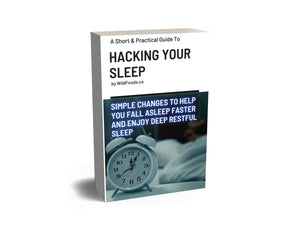How To Use Carb Cycling To Reach Your Weight Loss Goals

Carb cycling is a nutritional strategy alternating between high and low carbohydrate intake to achieve specific health and fitness goals. This approach is prevalent among athletes, bodybuilders, and fitness enthusiasts for its effectiveness in promoting fat loss, muscle gain, and overall health improvement. This detailed tutorial will cover the ins and outs of carb cycling, its benefits, how to execute it, and the various forms of carb cycling diets.
What is Carb Cycling?
Carb cycling involves switching between periods of high and low carbohydrate consumption. The primary goal is to maximize the body's carbohydrate usage for energy, muscle maintenance, and fat loss. By controlling their carbohydrate intake, individuals can increase their metabolic flexibility and general performance.
Benefits of Carb Cycling
- Fat Loss: glucose cycling boosts fat burning by limiting glucose intake on non-training days, causing the body to rely on fat as its primary energy source (1).
- Muscle Preservation: High-carb days help replenish glycogen stores, promoting muscle recovery and growth (2).
- Improved Metabolism: Alternating carb intake keeps the metabolism active and prevents adaptation, which can lead to plateaus (3).
- Better Insulin Sensitivity: Cycling carbs can improve your body's insulin sensitivity, leading to better blood sugar control (4).
- Flexibility: Carb cycling promotes nutritional variety and can be adapted to specific needs and tastes.
How to Carb Cycle
Step-by-Step Guide
- Set Clear Goals: Determine whether you want to lose fat, increase muscle, or enhance your general health.
- Calculate Daily Carb Needs: Determine how many carbs you need to maintain weight.
- Plan Your High and Low Carb Days: Schedule higher carb intake on training days and lower carb intake on rest days. For example, if you train three days a week, these will be your high-carb days.
- Monitor Your Progress: Track your weight, body composition, and performance to adjust your carb cycling plan as needed.
- Consistency is Key: Stick to your strategy and adjust to reflect your success and goals.
Sample Carb Cycling Plan
For a 175lb male who trains weights three days a week:
- Training Days (High-Carb): Consume most carbs after workouts, focusing on starchy vegetables, fruits, and whole grains.
- Rest Days (Low-Carb): Reduce carb intake by half or more, focusing on lean proteins and non-starchy vegetables.
Different Types of Carb Cycling Diets
- High-Fat, Low-Carb (HFLC) Diet: Effective for weight loss and body recomposition but may cause fatigue and irritability.
- Cyclical Ketogenic Diet (CKD): Similar to HFLC but includes high-carb refeeds, often used by athletes to maintain performance.
- They targeted the Ketogenic Diet (TKD), which involves higher carb intake around workouts and is suitable for athletes needing performance maintenance.
Pros and Cons of Carb Cycling
Pros
- It helps maintain metabolic flexibility
- Improves blood sugar control
- Allows dietary variety and flexibility
Cons
- It can be challenging to stick with it in the long term.
- It may cause initial fatigue and irritability
- Requires careful planning and monitoring
What Foods to Eat on a Carb Cycling Diet
- Lean Protein: Grilled chicken, fish, tofu, legumes, and eggs.
- Low-Glycemic Carbs: Whole grains, vegetables, and fruits. Avoid high-glycemic carbs like white bread and sugary drinks.
- Healthy Fats: Avocados, olive oil, nuts, seeds, and fatty fish like salmon.
- Plenty of Water: Stay hydrated to support overall health and metabolic processes.
Carb Cycling Recipes
Breakfast: Egg White Veggie Omelet
Ingredients:
- Four egg whites
- 1 cup spinach
- 1/2 cup diced onions
- 1/2 cup diced peppers
- Salt and pepper to taste
Instructions:
- Cook the onions and peppers in a nonstick skillet until they are tender.
- Add spinach and cook until wilted.
- Pour in egg whites and cook until set.
- Season with salt and pepper.
Alternatives to Carb Cycling
- The Paleo Diet: Emphasizes whole, unprocessed meals.
- The Atkins Diet: A low-carb diet is divided into phases.
- The Ketogenic Diet: High-fat, low-carb diet promoting ketosis.
- The Mediterranean Diet: Fruits, vegetables, whole grains, salmon, and olive oil are all emphasized.
Related Studies:
- This study found that limiting carbohydrates for two weeks increased fat oxidation and decreased body fat percentage in healthy men and women.
- This review discusses how periodizing carbohydrate intake around training can help replenish glycogen stores and support muscle recovery and growth.
- This review explains how metabolic flexibility, the ability to switch between carbohydrate and fat oxidation, is essential for metabolic health and can be improved through diet interventions like carb cycling.
- This review found that carb-cycling diets may improve insulin sensitivity compared to continuous calorie restriction in overweight and obese individuals.
Conclusion
Carb cycling is an effective nutritional strategy to help you achieve your fitness and health objectives. Alternating between high and low-carb days will help you burn more fat, maintain muscle, and improve your overall metabolic health. Carb cycling offers versatility and variety, whether you are an athlete aiming to improve performance or a person looking to lose weight. Remember to work with a certified dietician or healthcare expert to develop a personalized strategy for your needs. Begin your carb cycling journey today and see the benefits for yourself.
FAQs
What is the primary goal of carb cycling?
The main goal is to optimize carb intake to support fat loss, muscle maintenance, and overall health.
Can carb cycling help with weight loss?
Carb cycling can aid in weight loss by increasing fat burn on low-carb days.
Is carb cycling suitable for everyone?
While effective, carb cycling may only be suitable for some. Before starting, it's essential to consult with a healthcare professional.
How long should I follow a carb-cycling diet?
The duration depends on your goals. It can be followed long-term with proper planning and adjustments.
Are there any side effects of carb cycling?
Some may experience initial fatigue, irritability, and brain fog, but these effects typically subside as the body adapts.
